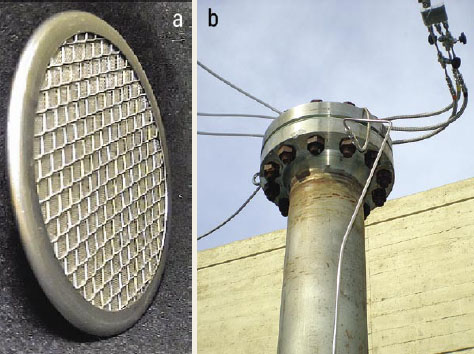|
Vol. 228 No. 1 |

|
 |
| VICTOR SCHMIDT, DRILLING ENGINEERING EDITOR |
Some like it hotter. The world of heavy oil is "heating up." Two new technologies to produce this difficult petroleum resource are now close to commercialization.
Heavy oils require substantial viscosity reduction before they can be produced. The industry routinely does this by adding heat in the form of steam. Standard practice is to produce steam in a central boiler plant and distribute the steam to the field's injector wells through insulated flowlines.
Now, that method is being challenged because a central system delivers uneven steam quality across a field. This is caused by variable transport distances, rough terrain and deep wells. These factors lower the production that could be achieved with better and higher heat input.
Air quality constraints in many areas limit burning of natural gas or other fuels to generate steam. Permits for new steam installations are also becoming harder to approve because of environmental land use restrictions. Another contributing factor is the growing concern over CO2 emissions. New hydrocarbon-burning installations are coming under increased scrutiny across the globe because of Kyoto-based CO2 targets.
The industry is responding by developing downhole devices to produce steam for direct reservoir injection. Two devices have come to my attention, although I have no personal experience or independent information on how well they work. Precision Combustion Inc.'s Catalytic Combustor Steam Generator and EDSG Systems' Electric Downhole Steam Generator, developed by Meshekow Oil Recovery Corp., place the active element (boiler equivalent) in the bottom of the well in close contact with the heavy-oil reservoir.
PCI is extending their catalytic combustor technology to meet the conditions for downhole steam injection. Their system uses air, methane (or other hydrocarbon gas) and water as inputs. These elements react on the company�s proprietary Microlith catalytic combustor to produce a flow of steam, CO2 and NOx, which is then forced into the reservoir. Steam and combustion products dissolve into the crude to lower its viscosity, while the pressurized flow mobilizes loosened oil toward producing wells.
EDSG�s Electric Downhole Steam Generator uses a different process that requires only two inputs: water and electricity. Their technology uses carbon electrodes to produce a controlled-plasma arc, which vaporizes water into steam. Pressure from the expanding water forces the high-temperature steam into the reservoir.
Both processes deliver higher BTUs at higher rates, than standard practice, and they deliver BTUs directly to the reservoir. This should increase oil production and improve reservoir recovery rates.
Energy savings and improved efficiency come from generating steam close to the reservoir. Steam distribution losses are eliminated because there are no boiler losses, no insulated lines to dissipate heat or pressure and no wellbore losses. Water use drops for the same oil production, because it is applied better.
One advantage is the systems� reduced environmental footprint. Placing the boiler in the wellbore removes most air-emissions-limit problems. CO2 and other combustion/freed gases remain in the reservoir, improving solution drive.
Both systems offer the promise of developing heavy oil resources in difficult conditions, especially in deep wells, subsea wells and arctic regions where permafrost hampers surface operations. Downhole steam generation adds design flexibility for new wells and provides opportunities to use steam enhancement with other IOR technologies.
Both new technologies are in their trial stages before final commercialization, so you can expect to hear more about them in the next year or two. Should these technologies succeed, the massive heavy oil resources of Venezuela, US, Canada and other world areas will see expanding production.
 |
Precision Combustion uses air, hydrocarbon gas and water as inputs to its
(a) Microlith Catalytic Combustor to generate steam downhole, while (b) EDSG Systems uses electricity (left side) and water (right side with valves)
to feed its Electric Downhole Steam Generator, shown in this test cell.
|
|
FIRST GOM FPSO
The MMS approved Petrobras� development plan for Cascade and Chinook fields. The company will use an FPSO in 2,500 m water depths to phase-develop the fields in 8,200 m water depths in the Gulf of Mexico.
In addition to the GOM�s first FPSO, Petrobras proposes to use polyester lines anchored to torpedo piles, submerged pumps and self-sustainable risers. Production will be received through disconnectable turrets on the FPSO and be moved to shore by lightering vessels. Gas will come to shore by pipeline. This technology suite has never been used in the GOM.
Three subsea wells will be connected in the first development phase: one in Chinook and two from Cascade field. Production should begin in 2009. 
|





